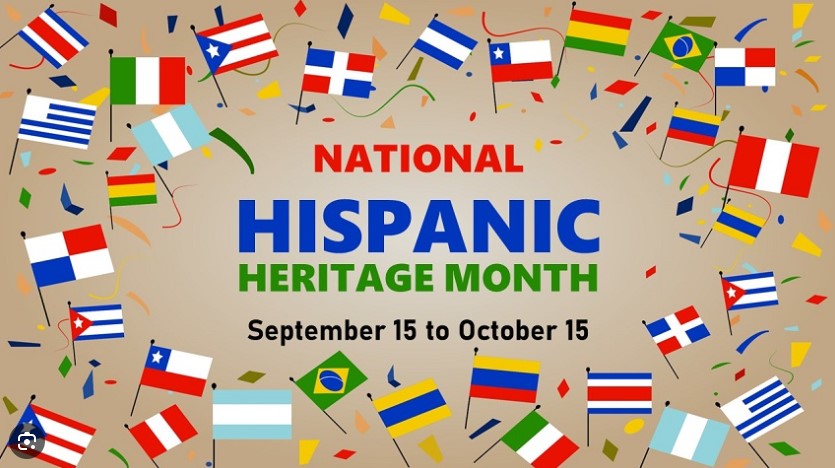
Each year, from September 15th to October 15th, the United States celebrates Hispanic Heritage Month. This month-long celebration is a time to recognize and honor the rich and diverse contributions of Hispanic and Latino Americans to the nation’s history, culture, and society. It is a period to acknowledge the profound impact this community has made in shaping the United States into the vibrant and multicultural nation it is today. In this article, we will explore the significance of Hispanic Heritage Month, the history of Hispanic and Latino communities in the United States, their cultural contributions, and the ongoing importance of promoting diversity and inclusion.
The Significance of Hispanic Heritage Month
Hispanic Heritage Month has its roots in the celebration of the independence of several Latin American countries, including Costa Rica, El Salvador, Guatemala, Honduras, and Nicaragua, which declared their independence on September 15, 1821. Mexico celebrates its independence on September 16th, and Chile on September 18th. The month-long celebration was established in 1968 by President Lyndon B. Johnson and later expanded by President Ronald Reagan in 1988 to cover the period from September 15th to October 15th.
This month is a time not only to honor the achievements and contributions of Hispanic and Latino Americans but also to raise awareness about the diverse cultures, histories, and traditions that make up this community. It serves as a platform to celebrate the richness of Hispanic and Latino heritage and to foster greater understanding and appreciation among all Americans.
A History of Hispanic and Latino Communities in the U.S.
The history of Hispanic and Latino communities in the United States is a long and complex one. It can be traced back to the early explorations of Spanish conquistadors and settlers, who arrived in what is now the southwestern United States, Florida, and California in the 16th century. These early settlers played a significant role in shaping the culture and heritage of these regions, leaving lasting marks on architecture, cuisine, and language.
In the 19th and early 20th centuries, waves of immigrants from Latin American countries, including Mexico, Cuba, Puerto Rico, and the Dominican Republic, began to arrive in the United States seeking economic opportunities and political refuge. Their contributions ranged from labor and agriculture to art and literature, enriching the cultural tapestry of American society.
Today, Hispanic and Latino Americans represent a diverse group with roots in countries across Latin America and Spain. They have become an integral part of the American fabric, contributing to various fields such as politics, business, entertainment, sports, science, and education.
Cultural Contributions
The cultural contributions of Hispanic and Latino Americans are vast and encompass a wide range of art forms, traditions, and achievements. Here are just a few areas where their influence has been profoundly felt:
- Music: Latin music, including salsa, merengue, bachata, and reggaeton, has had a profound impact on American music. Artists like Celia Cruz, Tito Puente, and Selena Quintanilla have left an indelible mark on the music industry, and contemporary artists like Shakira and Jennifer Lopez continue to shape the musical landscape.
- Cuisine: Hispanic and Latino cuisine has become an integral part of American food culture. Dishes such as tacos, empanadas, ceviche, and paella are beloved by people from all backgrounds. The fusion of flavors and culinary techniques has enriched the American palate.
- Literature: Hispanic and Latino authors like Gabriel García Márquez, Isabel Allende, Junot Díaz, and Sandra Cisneros have won international acclaim for their literary works, which often explore themes of identity, immigration, and cultural heritage.
- Art and Visual Arts: Hispanic and Latino artists have made significant contributions to the art world. Frida Kahlo, Diego Rivera, and Jean-Michel Basquiat are just a few examples of artists whose work continues to inspire and captivate audiences worldwide.
- Film and Television: Hispanic and Latino actors, directors, and producers have made significant strides in the entertainment industry. Icons like Rita Moreno, Antonio Banderas, and Guillermo del Toro have garnered critical acclaim and awards for their work.
The Ongoing Importance of Diversity and Inclusion
While Hispanic Heritage Month is a time to celebrate the contributions of Hispanic and Latino Americans, it also serves as a reminder of the ongoing need for diversity and inclusion in all aspects of American society. It’s a time to reflect on the challenges faced by Hispanic and Latino communities, including issues related to immigration, education, healthcare, and economic disparities.
Efforts to promote diversity and inclusion are not limited to this month alone but should be a year-round commitment. Embracing and celebrating diverse cultures and backgrounds strengthens the social fabric of the United States and fosters a more inclusive and equitable society for all.
Hispanic Heritage Month provides an opportunity for all Americans to come together and celebrate the rich tapestry of culture, history, and contributions of Hispanic and Latino communities. It is a time to recognize the enduring impact of this diverse and vibrant community on the United States and to reaffirm the importance of diversity, inclusion, and unity. As we celebrate this month and beyond, let us continue to embrace the values of cultural diversity and mutual respect that are essential to the strength and vitality of our nation.
